5
Crear Insignias Digitales de calidad y sistemas de Insignias
Crear Insignias Digitales de calidad y sistemas de Insignias
Contenido
Esta playlist de aprendizaje te proporcionará conocimientos y oportunidades para desarrollar tus habilidades en la creación de Insignias de calidad y sistemas de reconocimiento basados en insignias.
Cada actividad de esta playlist es como una pequeña parte formativa que te ayudará a entender mejor los fundamentos de las Insignias Digitales, cómo puedes crear una insignia y cómo puedes combinarla en un sistema de insignias más amplio.
Si ya estás creando insignias y sistemas de reconocimiento basados en insignias, puedes, simplemente, subir enlaces o capturas de pantalla de tus insignias creadas para cada actividad finalizada.
La playlist consta de 4 actividades obligatorias y una opcional para desbloquear la insignia de la playlist «Habilidades para crear Insignias Digitales de calidad y sistemas de Insignias»:
Obligatorio
- Actividad: ¿Qué es una Insignia Digital? ¿Qué tienen de interesante las Insignias Digitales?
- Actividad: ¿Cómo empezar a utilizar las Insignias Digitales?
- Actividad: ¿Cómo crear una Insignia de calidad?
- Actividad: Crear sistemas de insignias e itinerarios de aprendizaje
Opcional
Actividad: tutoriales para crear Insignias
La insignia de la playlist es uno de los trampolines para que tu organización obtenga el Sello de Calidad para el reconocimiento basado en Insignias.
El Sello de Calidad implica el compromiso de respetar las normas de calidad en las actividades de emisión de insignias. Es un signo de confianza, credibilidad y reconocimiento para los emisores y receptores de insignias, que fomenta una comunidad dedicada a ofrecer un aprendizaje y un reconocimiento de competencias de calidad.
Actividades a realizar
Complete las siguientes actividades, gane insignias y verá el progreso de su lista de reproducción actualizada
Contenido
Diseñar un sistema de insignias significa revisar sistemáticamente los objetivos de tu programa, curso u organización y diseñar todo el sistema de reconocimiento basado en una serie de Insignias Digitales. No te preocupes. Iremos paso a paso.
Un sistema de insignias es una compilación de insignias vinculadas entre sí de acuerdo con los objetivos definidos, el itinerario de aprendizaje previsto y el contexto en el que se utilizan las insignias.
Mira el vídeo sobre lo esencial en el desarrollo de un sistema de insignias.
Fuente: Vídeo creado para el proyecto «Digital technology for pathways to entrepreneurial skills», canal Youtube de Cities of Learning
Cada insignia puede servir para un propósito diferente en el proceso de aprendizaje y reconocimiento de los logros. Se pueden conectar las insignias de varias maneras y establecer niveles o requisitos sobre cómo se pueden obtener las insignias dentro de un itinerario de aprendizaje más amplio.
Aquí encuentra algunos ejemplos de sistemas de insignias presentados a través de varias publicaciones:
Al diseñar un sistema de una determinada manera, puede lograr múltiples objetivos:
- Un sistema de insignias puede ayudar a los alumnos a navegar por los itinerarios de aprendizaje.
- Puede motivar a los alumnos para que sigan el ritmo y sean resistentes en el itinerario más largo.
- Un sistema de insignias puede visualizar los hitos del aprendizaje o mostrar cómo una competencia se compone de fragmentos de aprendizaje más detallados.
La forma de diseñar las insignias y vincularlas permite mostrar un enfoque holístico del aprendizaje en el que cada insignia se obtiene de forma diferente, pero todas forman una imagen completa de las competencias.
¿Cómo empezar a crear un sistema de insignias?
Paso 1. Establece los objetivos de tu sistema de insignias.
Paso 2. Imagina y describe el recorrido de tus alumnos.
Paso 3. Identifica los hitos principales y los pasos más pequeños para alcanzar las insignias de progreso.
Paso 4. Define las dinámicas significativas en momentos concretos del aprendizaje: incorporación, motivación, señalización, reconocimiento y diversión.

Aquí tienes algunos ejemplos de cómo puede ser un sistema de insignias.
Puedes tener un sistema lineal.
Es un sistema en el que obtener una insignia desbloquea la siguiente en una secuencia lineal clara. Puedes verlo como niveles o como escalones. Esta progresión puede ser útil si un viaje de aprendizaje tiene una estructura rígida y un alumno no puede empezar a aprender ciertas cosas sin pasar algunos niveles más básicos.
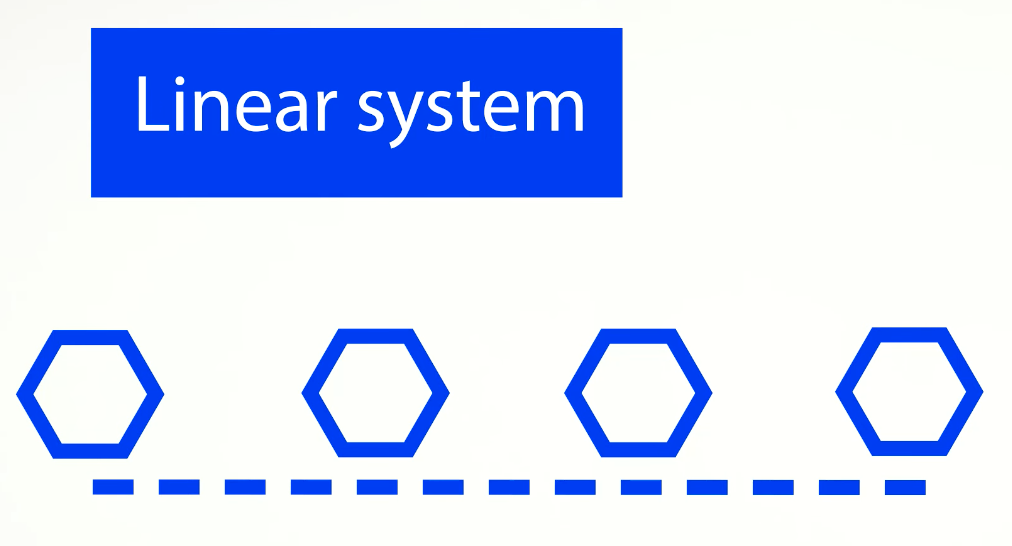
Sistema basado en competencias / Sistema de Colección
Puedes crear un sistema basado en una serie de competencias o en un conjunto de actividades, en el que el alumno pueda elegir libremente por dónde empezar a aprender y a obtener insignias. Luego, dentro de una competencia o actividad, hay un subsistema más pequeño de insignias, que pueden estar conectadas de forma lineal o de flujo libre. En un sistema de este tipo, una insignia de competencia es como una insignia de hito, que requiere insignias de nivel «inferior» para ser obtenida. Puedes decidir si el alumno necesita obtener estas insignias en una secuencia específica o de forma flexible.
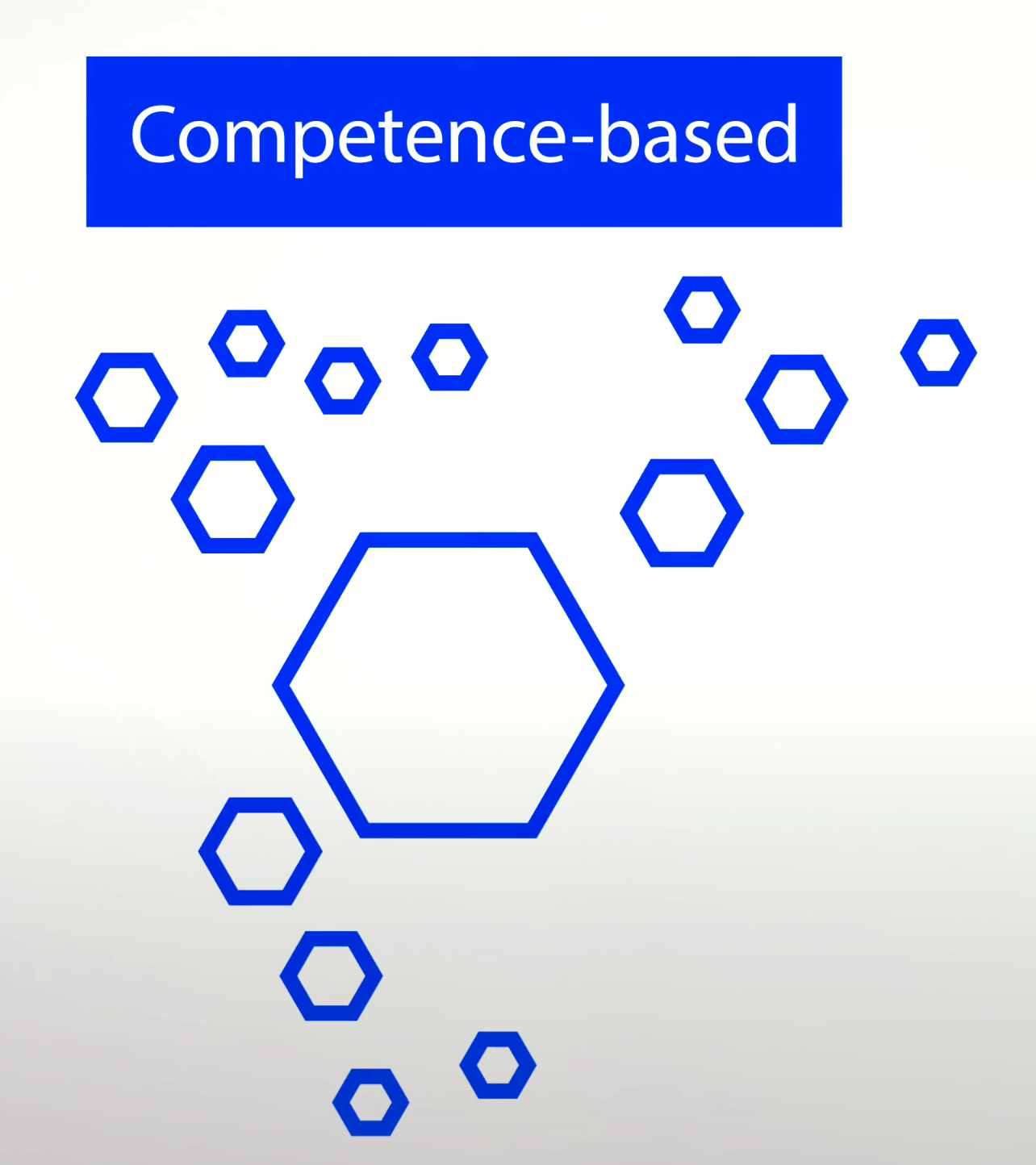
Sistema mixto de insignias
Puedes acabar combinando varios de estos tipos en un sistema mixto.
Por ejemplo, puede tener varias insignias de iniciación para ayudar a la gente a entender cómo funcionan las insignias y cuáles son los puntos de entrada a tu sistema de insignias. A continuación, puedes ofrecer varios subsistemas con pocas insignias en cada uno. Puedes ofrecer algunas insignias opcionales a obtener por mostrar ciertas cualidades o comportamientos. Puede haber varias insignias de metanivel que muestren dominio o logros únicos dentro de su programa educativo.

Diseña tu sistema de insignias de forma que esté alineado con tu enfoque educativo, objetivos y estándares educativos.
Mira la grabación del seminario web sobre el diseño del sistema de insignias y descubre algunos consejos sobre cómo crear un flujo de evaluación para las insignias, cómo conectar una insignia con otra y cuáles son los diferentes tipos de sistemas de insignias.
Empieza a diseñar tu sistema de insignias
Empezamos con un usuario: Tonny, que empezó a visitar nuestro centro juvenil hace poco. Nos centramos en las cosas que Tony está experimentando, las cosas que le gustan y prefiere en la vida.
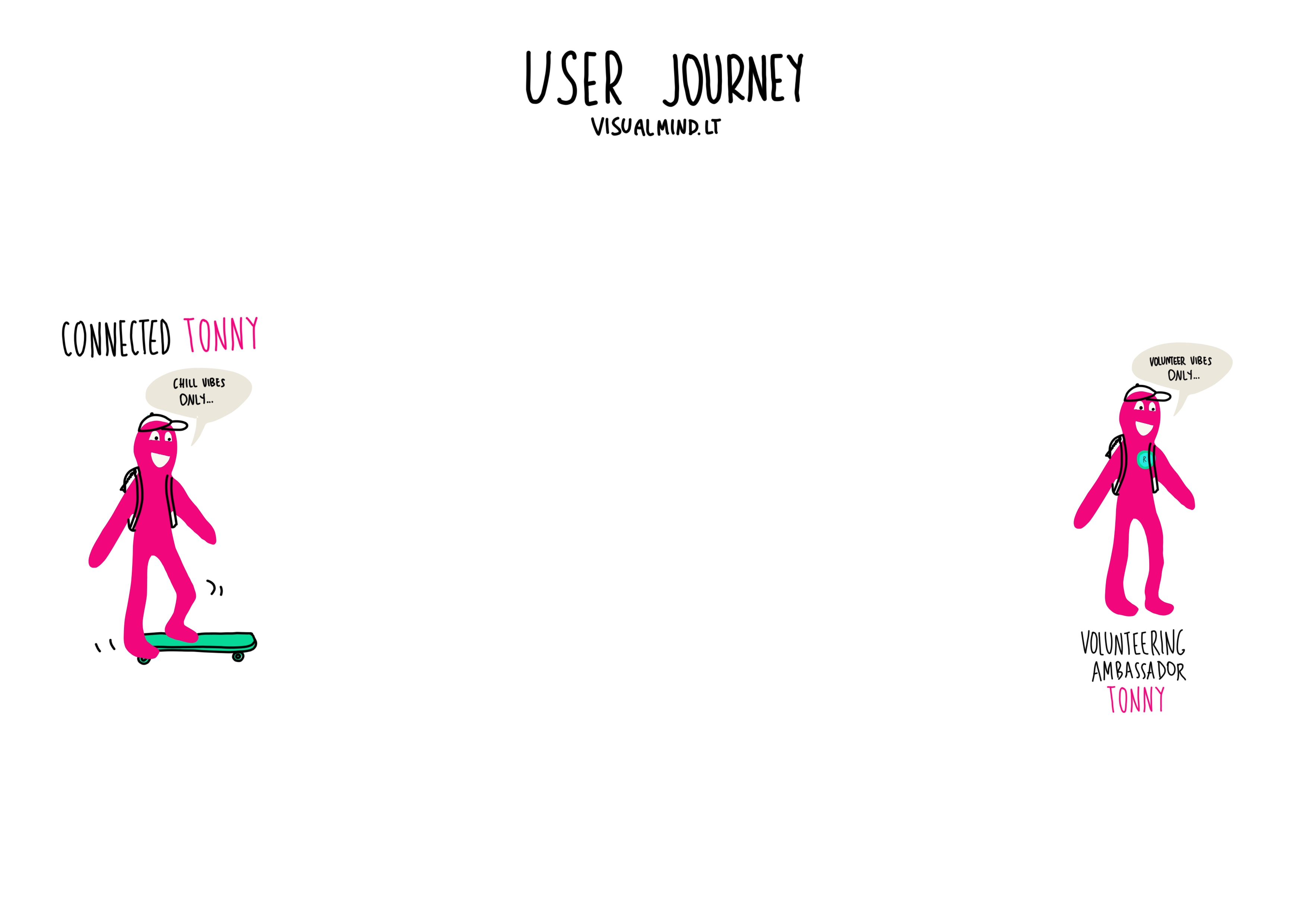
Identificamos cuáles son las experiencias clave que esperan a Tonny en nuestro centro juvenil y que pueden conducir a sus competencias y actitudes para que pase de ser el Tonny conectado al Tonny Embajador del Voluntariado.
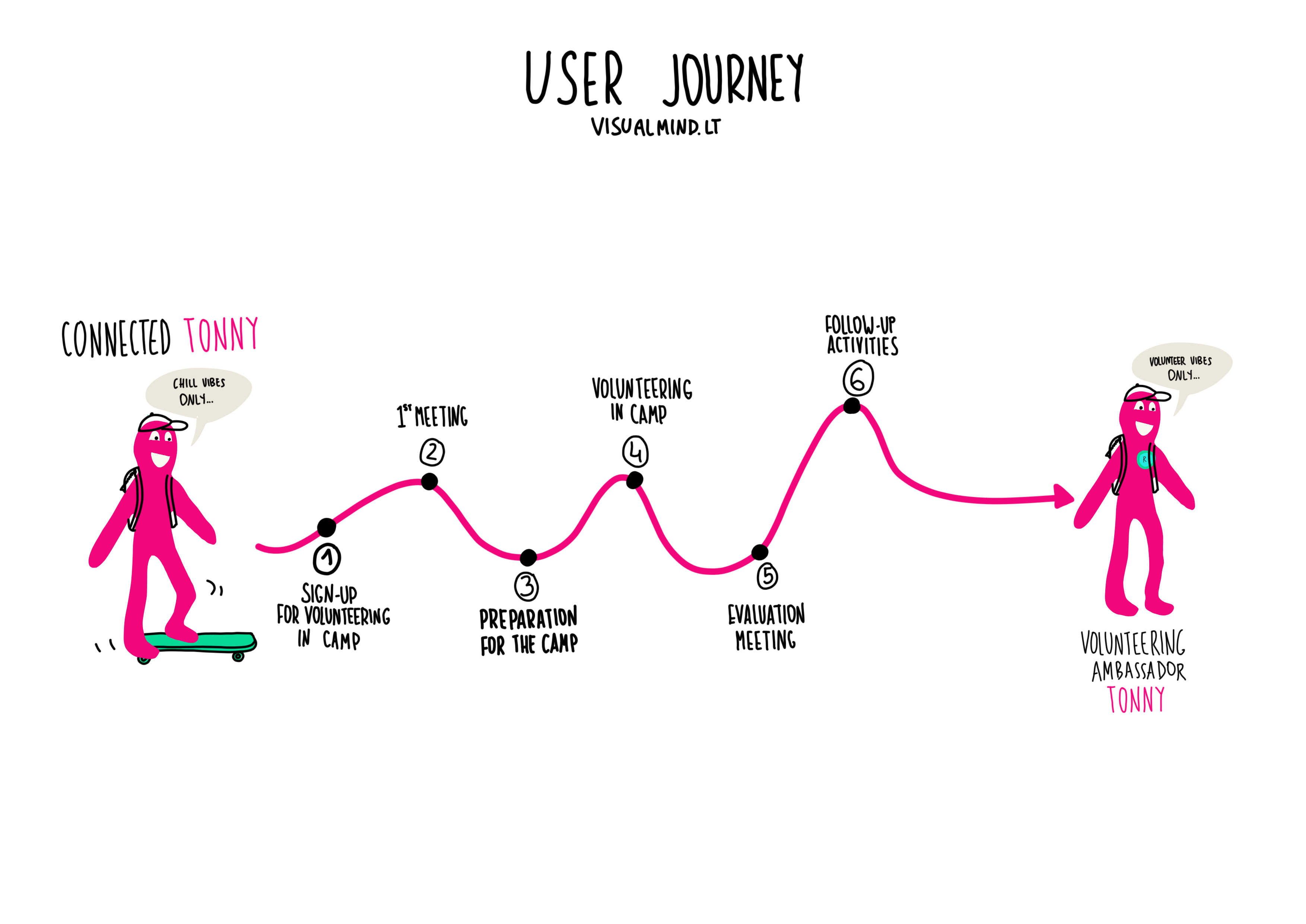
Luego analizamos cuáles son las experiencias concretas en cada etapa, cuáles serán las actividades y quiénes participarán en ellas.
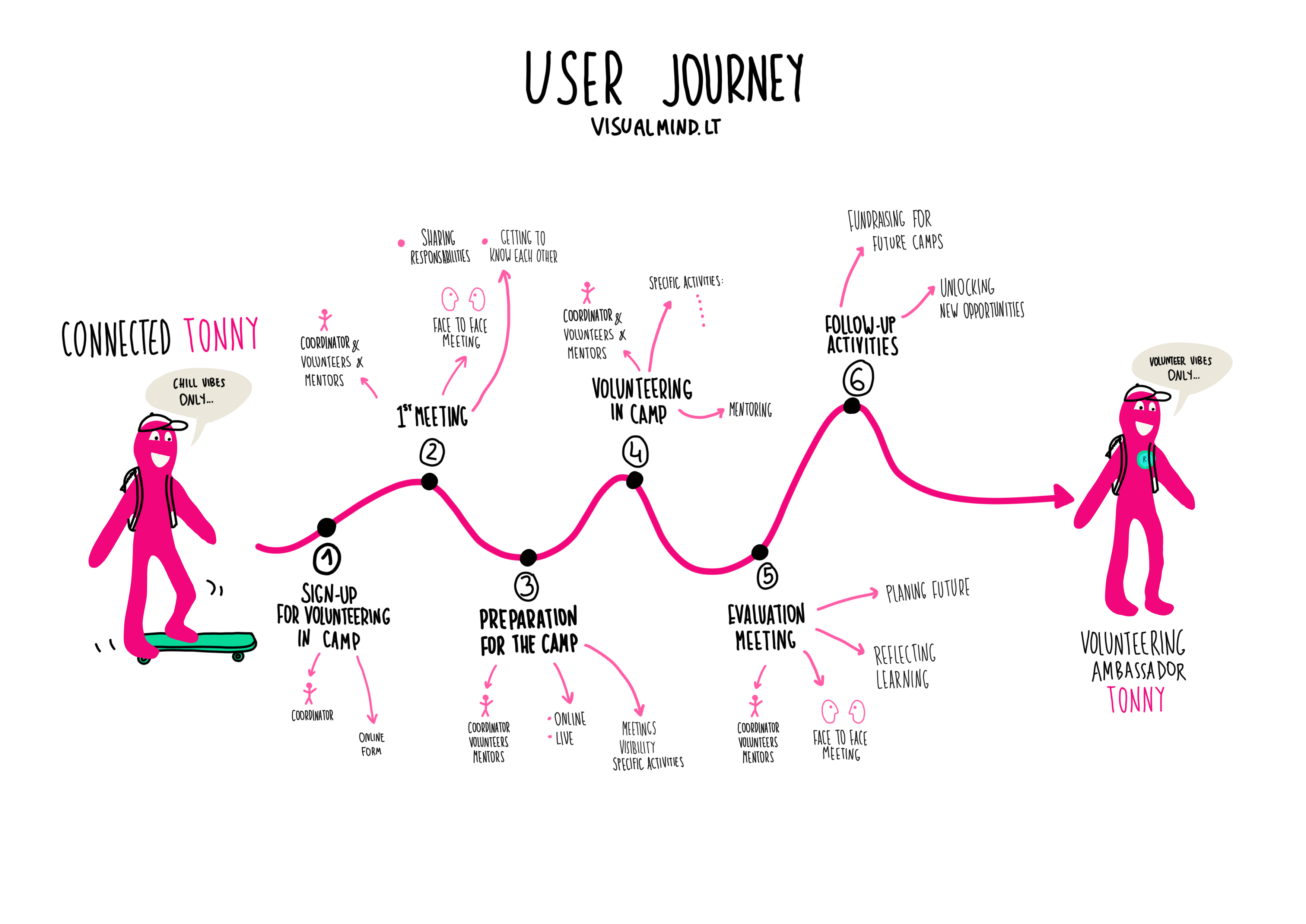
Por último, decidimos cómo pueden ayudar las insignias a Tonny en su proceso de aprendizaje. En algunos momentos podría necesitar motivación y reconocimiento por sus esfuerzos, en otros momentos podría necesitar una insignia para obtener feedback sobre sus habilidades o reconocer los esfuerzos realizados. Marcamos las diferentes insignias con algunas letras: P - insignia por participar, R - insignia por reconocimiento, PA1 - insignia por participar en la actividad de preparación 1, A1 - insignia por participar y aprender en la Actividad 1, PF - insignia por planificar el futuro.
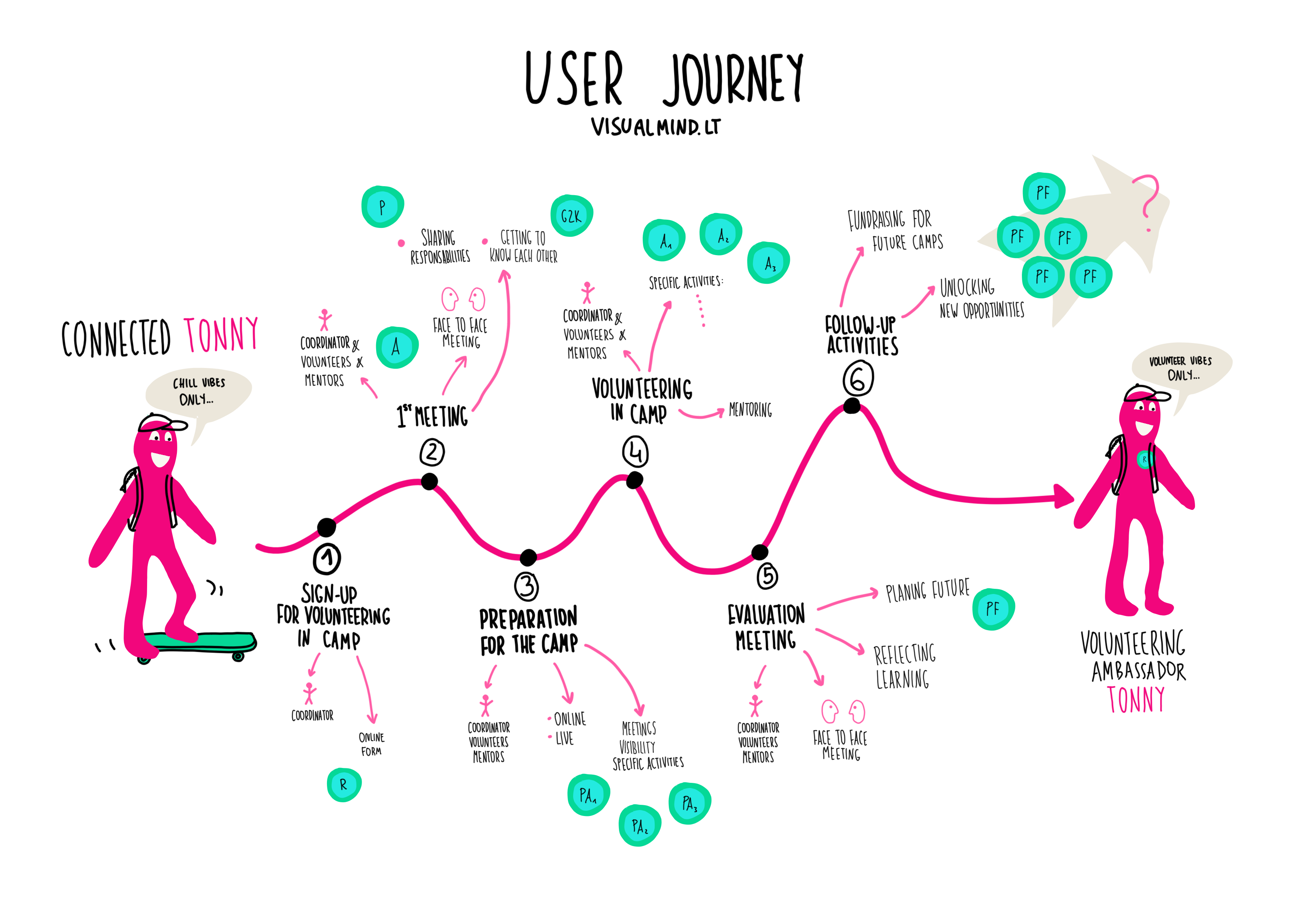
Ahora es el momento de poner en práctica tus ideas. ¿Quién es tu alumnado? ¿Cuál es el recorrido de tu alumnado? ¿Dónde quiere que se encuentre el alumnado al final del recorrido y cómo pueden ayudarle las insignias?
A continuación, dirígete a la búsqueda de insignias y consulta la tarea práctica sobre la creación de sistemas de insignias.
Material
- Badges4Good - 12 practices in using Open Badges
- Trusted Badge Systems - building trust and recognition with Open Badges
- Unique Learning Badges - examples of 6 Open Badge systems
- Badge system description template MS Word version
- Modello per la descrizione di un sistema di badge in italiano (Word)
- Ženkliukų sistemos kūrimo šablonas lietuviškai(MS Word)
Consigue la insignia de actividad
Diseñador de Sistema de Insignias Consigue esta insignia
Esta insignia demuestra mi mayor conocimiento sobre cómo crear sistemas de insignias o itinerarios de aprendizaje basados en insignias.
Para obtener esta insignia, tuve que presentar un prototipo sencillo de un sistema de insignias para el proceso de aprendizaje.
Las evidencias fueron revisadas por uno de los formadores.
Esta insignia se emite como parte del curso en línea que conduce a la obtención de la Insignia del “Sello de Calidad”.
https://badgequalitylabel.net/storage/content/dsu862obp55i7s112aicn43vum0l40qc.docxhttps://badgequalitylabel.net/storage/content/dsu862obp55i7s112aicn43vum0l40qc.docxhttps://badgequalitylabel.net/storage/content/dsu862obp55i7s112aicn43vum0l40qc.docxhttps://badgequalitylabel.net/storage/content/dsu862obp55i7s112aicn43vum0l40qc.docx
Tareas
Tarea no.1
Evidencia verificada por: Un organizador de actividades
Ahora ya sabes cuáles son los pasos principales para diseñar un sistema de insignias y cuáles podrían ser los diferentes tipos de insignias y cómo podrían conectarse en el itinerario de aprendizaje.
Elige un proyecto, un programa o algún tipo de flujo de aprendizaje que estés organizando o que estés experimentando como alumno. Toma papel y bolígrafo o utiliza herramientas digitales para dibujar un itinerario de aprendizaje desde el principio hasta el final. Piensa en qué punto del recorrido podrían ser útiles las insignias y qué tipo de insignias encajarían en ese momento concreto: incorporación, compromiso, motivación, reconocimiento, diversión, etc.
Haz una foto del recorrido, añade cualquier explicación adicional y súbela aquí para las evidencias.
También puedes empezar a describir tus insignias en el formulario basado en esta plantilla y subirlo aquí.
La insignia se emitirá cuando las evidencias sean revisadas y aceptadas por al menos un formador.
Actividades: 4
Iniciado: 141
Lista de reproducción completada: 17
Tiempo para completar: 4 horas 20 minutos
Compartir:
Organizadores
Network of Cities and Regions of Learning
Badge issuer recognized with
Cambiar a otro idioma:

